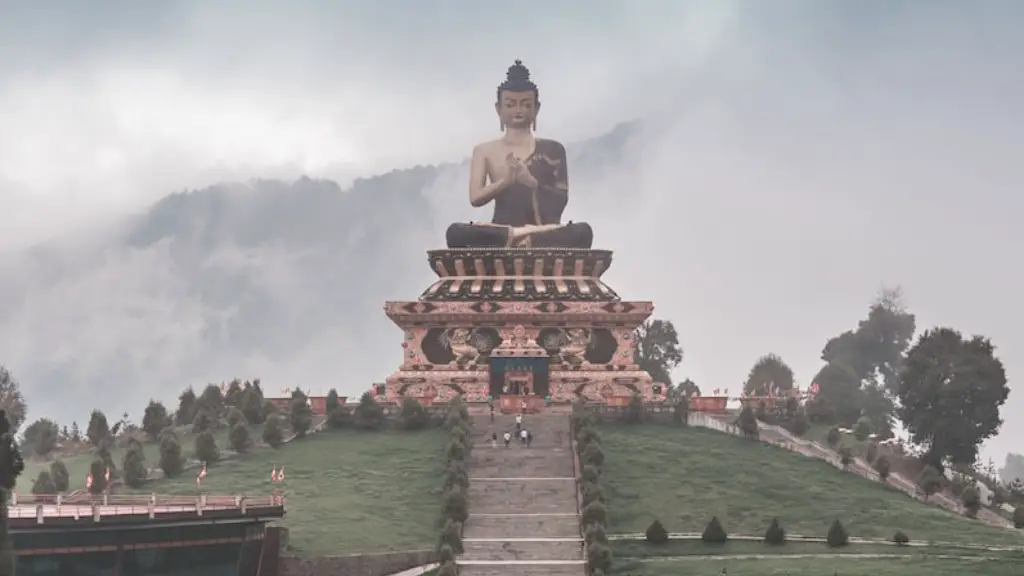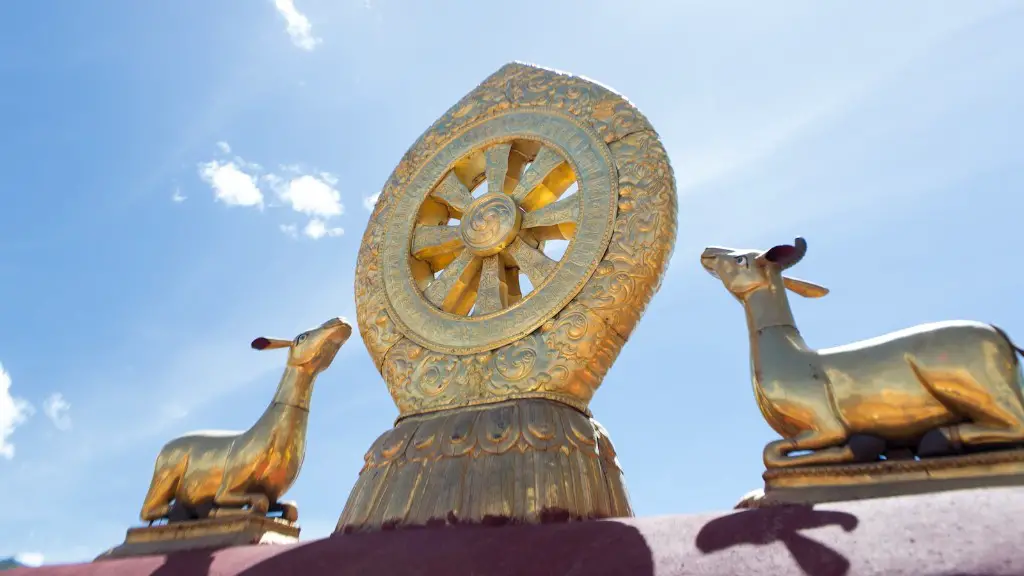Kali is one of the most powerful gods in the Hindu pantheon, a Hindu trinity presiding over Creation, Preservation and Destruction. Dedicated by warriors, ascetics and kings of old, Kali is often depicted as a fierce warrior goddess, with a fierce, intimidating presence and a formidable arsenal of weapons. As the Hindu religion is based on the principal of duality, Kali is the twin of the god Shiva, embodying his destructive power. Devotees of the goddess idolize her as the symbol of female power and strength.
The exact origin of Kali remains a mystery. It is unknown when and where she first appeared in Indian mythology. However, some scholars believe that she is of pre-Vedic origin, and has been part of the Indian spiritual tradition for millennia. Hindu mythology tells that she is the “remover of darkness”, helping people to overcome their fears of the unknown and discover their true potential.
Kali is typically represented wearing a necklace of skulls symbolizing her power to destroy evil, and is usually seen in artwork with four arms, representing her divine strength and power. Her two main weapons are a trident, which signifies divine power and knowledge, and a sword, symbolizing her all-consuming power.
Kali is also seen as a motherly figure, acting as a protector of her devotees. She is sometimes considered to be Shiva’s consort and the mother of Ganesha, the elephant-headed god. According to Hindu mythology, Kali and Shiva’s union is essential to the creation of the universe and its inhabitants.
In popular Hindu practice, Kali is worshipped and represented in various forms, ranging from images of her as a powerful warrior goddess to representations of her as a loving and nurturing mother. Her followers usually venerate her with offerings and prayers, and seek her aid during difficult times. The chanting of mantras dedicated to her, such as the Kali Gayatri Mantra, or her powerful 1000 Names, is believed to bring both physical and spiritual protection and help manifest her divine grace in the lives of her devotees.
Kali remains an important and powerful figure in Hinduism. Although she can seem intimidating, she is a benevolent figure that must be understood to be properly appreciated. To a Hindu, she is both the destroyer and the restorer of cosmic balance, the ultimate power behind the creation, sustenance, and dissolution of the universe. Her very existence is an affirmation of the major truth that death is a necessary part of life.
Kali in the Mahabharata and the Bhagavad Gita
Kali is mentioned several times in Hindu scriptures and epics, although often referred to as Durga or Kali Ma, signifying her different incarnations. One such mention is found in the Mahabharata, an ancient Indian epic poem which consists of 18 books with over away hundred thousand verses. In this text, approximately 30 verses describe the goddess Kali in a very detailed manner.
In the Bhagavad Gita, a 700-verse treatise of practical advice that forms part of the Mahabharata, Kali is also referred to as a being of tremendous power and protection. The Gita tells that She is a source of knowledge and guidance, and an assurance of security and well-being to those who seek her solace.
In Hinduism, Lord Shiva is said to be sometimes personified as Kali in his darker aspect. This is particularly so in the Mahakala form of Shiva, where he is described as holding a trident, wearing a garland of skulls around his neck and having a third eye in the middle of his forehead.
Kali is also believed to have been the embodiment of the goddess Shakti, a deity of cosmic power and is often referred to as “Mother Nature”. Her four arms, each having a weapon, symbolically represent the aspects of creation, protection, destruction and transformation.
The Celebration of Kali Ma
Kali Puja is a popular Hindu festival that celebrates the goddess Kali, particularly in Bengal and Odisha. On this day, a large number of devotees gather to offer prayers and offerings to her in the hope of fulfilling their desires and obtaining her divine blessing.
The rituals involve drawing a large picture of Kali on the ground and offering her sweets, flowers and incense. This is believed to gain her favors and provide relief to those who are suffering. People also chant various hymns and mantras dedicated to Kali and ask for forgiveness for whatever transgressions they have made.
The main day of celebration for this festival is usually the day of the new moon in the Hindu month of Kartik. During this day, devotees prepare special foods and sweets to offer to Kali in the hope that their prayers will be answered. The festival also involves singing and dancing in her honor.
The festival of Kali Puja also serves to remind people of the ultimate power of nature and the importance of respecting it. By celebrating and venerating this powerful goddess, devotees are reminded of the need for balance between the material and spiritual world.
The Teachings of Kali
Kali teaches her devotees the importance of accepting death and transformation as essential processes in life. She emphasizes the need to be prepared for the death of the physical body and the embracing of spiritual transformation. Through her teachings, she encourages her worshippers to break free from the fear of death, creating the chance to live a more meaningful life.
Kali’s message is one of strength, self-acceptance and resilience. She also encourages her followers to practice humility and to step away from their egos in order to discover their true potential. By allowing Her divine energy in their lives, people can learn to flourish and be capable of embracing the impermanence of life.
Kali is a powerful and revered deity in the Hindu religion. She is seen as a fierce protector, removing obstacles and granting blessings to those who seek her guidance. Despite her intimidating nature, she is a benevolent motherly figure that provides protection and solace to her devotees.
Kali and Tantra
In Hinduism, A tantric tradition highly revered is that of the worship of Kali, the mother of both Shiva and Vishnu. This type of tantra is largely devoted to the cultivation of devotion to Goddess Kali, and to the practice of her various forms of meditation and rituals. Worshippers of Kali seek to gain knowledge of the divine and seek enlightenment through their practices.
In this tradition, the ritual for honoring Goddess Kali typically involves the chanting of her mantras, meditating on her image and burning incense to please her. Other offerings to the Goddess include red flowers, because the color is associated with her energy, as well as food and sweets. Devotees may also practice her yogic form of devotion, ‘kalamela’.
Tantric texts contain numerous references to Kali’s power and her various forms. Through the practice of tantra, people can seek to encounter her directly and deepen their spiritual connection with her.
Kali in Popular Culture
In recent years, Kali has made her way into popular culture, due to her representation as a powerful warrior and her association with strength and resilience. Pop artists and fashion brands have used images of Kali to symbolize protection and empowerment. Her image has been featured on clothing items, such as t-shirts, as well as in artwork, jewelry, and even tattoos.
Kali’s power has also been explored in films, such as the 2011 movie “Kali”. This is an inspirational tale about a young woman who discovers her inner power and courage through the guidance of Goddess Kali. It was created to empower, inspire and move its audience, emphasizing the strength and beauty of the female spirit.
Kali’s influence goes beyond her religion and popular culture. Her power inspires people to embrace their feminine energy, to trust their instincts and to take control of their own destinies. By being a fierce protector, she reminds her devotees that they can and should be unafraid of taking risks, while at the same time understanding the need to protect themselves and those they love.
Kali’s Significance in Hinduism Today
Kali’s significance in Hinduism remains unchanged. As a powerful and protective goddess, she remains a figure that many people look to for guidance and strength. She is seen as a motherly figure, a source of comfort, and a symbol of protection.
In modern Hinduism, she is prayed to in homes, temples, and festivals. Her mantras are chanted, her image is venerated, and her divine grace is sought. For devotees of Kali, the goddess is believed to be both a teacher and a protector, guiding them on their journey towards enlightenment.
Regardless of her ferocious nature, Kali is seen as a symbol of strength, hope and rebirth. Through her, people are reminded of the importance of spiritual growth and the power of transformation. As such, Kali remains an inspirational figure in Hinduism today.

